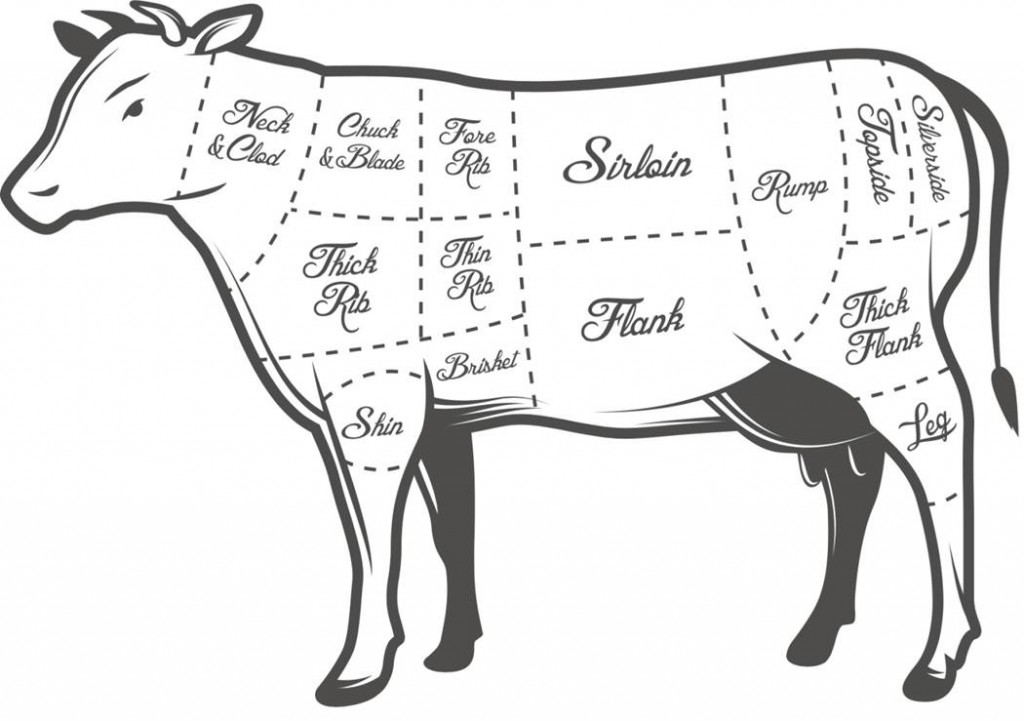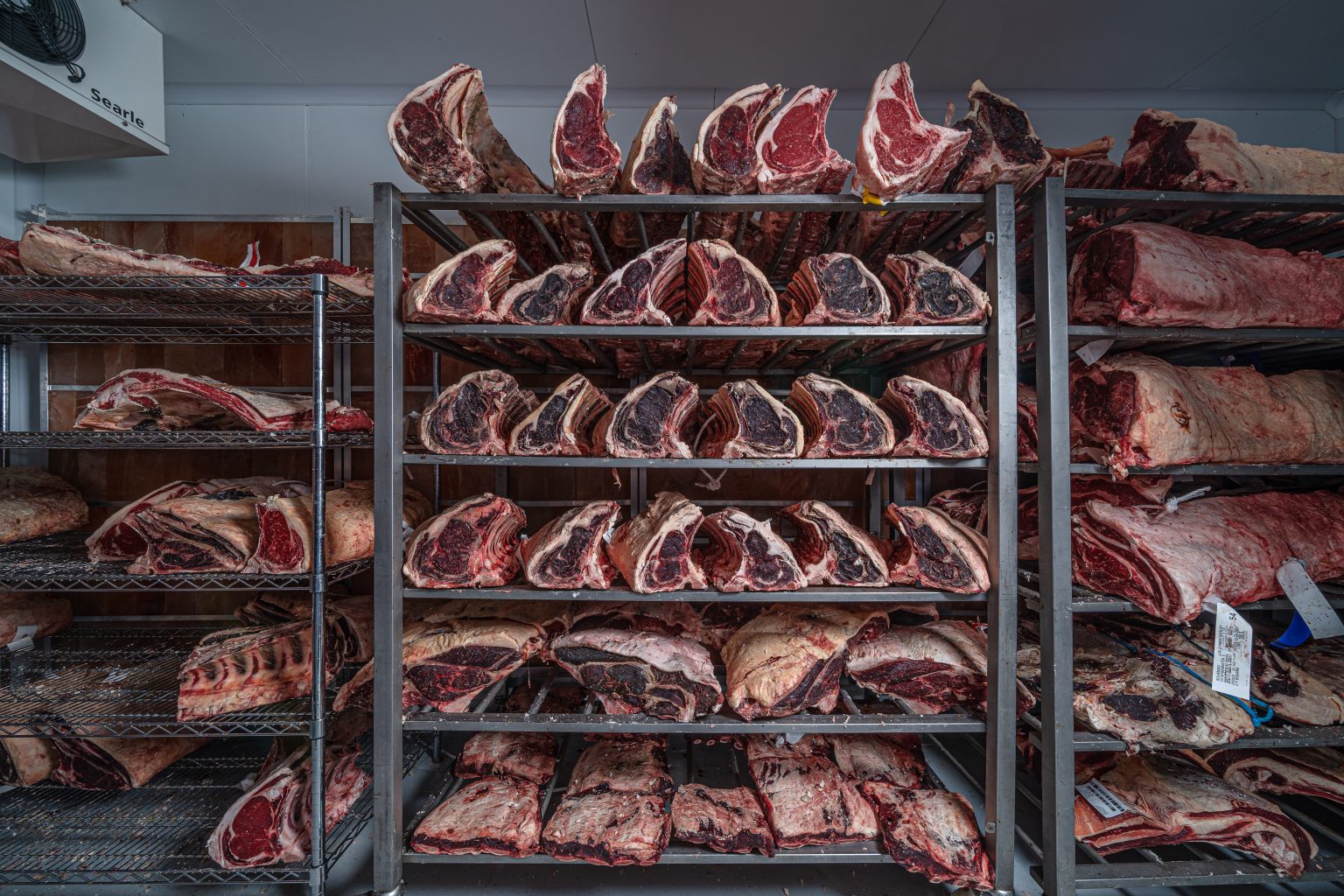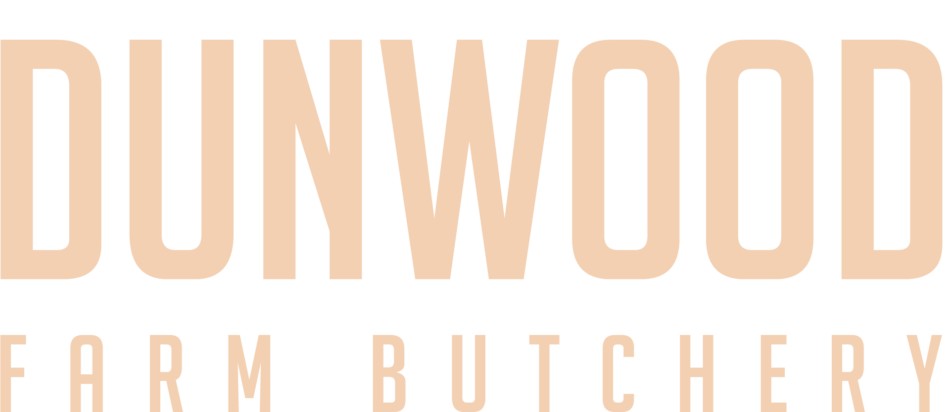For most meat lovers, myself included, beef is the definition of good meat; purchase it well hung and native breed, cook it appropriately and you’re in for a real treat and this is the art of beef butchery. However, purchase either unhung beef, or cook a slow cook cut quickly, or vice versa, and you’re going to be left with some rather disgruntled dinner guests! But fret not, our helpful guide explains the basics of beef, the cuts, the ageing process, and how best to cook them.
The Basics
As with all meat, the muscles that have undergone the most movement during life will be tougher, with a deeper flavour, and those muscles that have done little work will be more tender. With beef, the front (fore quarter) muscle groups will be tougher, suited to low and slow cooking. At the rear, the muscles still actively work, but not so much as those at the front; here you will find roasting joints such as the topside, silverside and rump. In the middle of the back you’ll find your sirloin, fillet, and moving back towards the forequarter the fore rib; these cuts are more tender due to completing relatively less work during life.
In the kitchen, the rule of thumb is fairly simple; cuts from the forequarter (chuck, braising, stew, shoulder, shin, brisket) require low, slow cooking with the addition of moisture (wine, water, cider). Cuts from the upper middle (fillet, sirloin, rib-eye) are best cooked fast and at high heat, pink in the middle. Cuts from the hind (topside, silverside, thick flank, rump) are great for roasting; the silverside, topside and thick flank are also good cooked low and slow with liquid, although they need to have been cut with sufficient fat covering for this to really work.

The Cuts
Take a look at our image above which explains the basics of Beef Butchery and what each cut of meat is called. We have included a full guide below to each of the different butchery cuts.
Cheek
Unsurprisingly the cheek is really tough, having worked pretty much none stop during an animal’s life. However, with that work comes incredible flavour, making the cheek a real gem for very slow cooking in plenty of liquid.
Neck
Meat from here is either sold as stewing beef or mince. Plenty of flavour to be found, but also patience required for that low, slow cooking – think casserole, stew, chilli.
Chuck
Here you’ll find joints suitable for slow pot roasting, or dicing for stewing beef. It’s also popular amongst the BBQ community for low and slow cooking due to its excellent marbling, or for making burgers with just the right fat content, creating succulent tasty beef burgers with the addition of some seasoning, and nothing else.
Thick Rib
This area produces meat suitable for stewing or pot roasting such as diced stew, braising steak, chuck or leg of mutton cut. Just in front and below here you’ll find the brisket, which is a fattier cut, making it best suited to slow cooking, either as a traditional pot roast, or a pulled brisket.
Shin
Beef from the shin is absolutely wonderful for slow cooking, and it’s great value too either on or off the bone. The connective tissues found in this lean cut break down during slow cooking to make a rich, flavoursome gravy, and when left on the bone, the bone marrow cooks away to make something really special.
Thin Rib
Here you’ll find short ribs or Jacob’s ladder when left on the bone, or stewing beef or mince when removed from the bone. All require slow cooking, to make the best of this flavoursome area. Short ribs and Jacob’s ladder are hugely popular for low and slow BBQ cooking, which will be ready when the bones can be pulled away freely and cleanly.
Fore Rib
With a good fat covering and deep marbling, the fore rib makes one of the finest roasting joints in a beef animal. As a roasting joint, this is best cooked on the bone, either untrimmed or larder trimmed, but it can be boned and rolled. The centre of this cut is best served pink, which complements the charred and crispy exterior. From the centre of this cut you’ll find the rib-eye steaks, a juicy, tender steak that all steak fans love.
Sirloin
The sirloin makes a great roasting joint, or a flavoursome steak for quick grilling or frying, on or off the bone. In this area you’ll also find the fillet, the most tender cut of beef, best suited to quick frying and perhaps basting with butter to ensure moistness. The sirloin and fillet left on the bone and cut into steaks creates the T Bone, or Porterhouse. Whilst this steak looks awesome it’s really going to be about compromise, as the fillet requires shorter cooking then the sirloin.
Rump
Rump is good for roasting, or as steaks, cut as either a traditional cut rump, or seam butchered to produce the Picahna (rump cap), rump fillet and centre cut rump.
Topside
Good for roasting or casseroling
Silverside
Leaner than the topside, but also good for roasting and casseroling.
Thick Flank/Top Rump
Cut thinly from a properly aged animal, beef from the top rump makes a good minute steak. As a joint, it’s good for braising, casseroles or pie making.
Oxtail
Oxtail is usually sold in 2 inch rounds on the bone, which is great for slow cooking in liquid, with the naturally occurring gelatine providing a rich gravy.
Dry Ageing Beef
At Dunwood we age our beef on the bone in the traditional way for a minimum of 28 days in our specialist aging fridge, lined with Himalayan Salt bricks. Why do we do this? It’s quite simple; as farmers we have worked for three years from the point of conception to slaughter to produce our beef, we’re proud of what we have produced and therefore waiting another 4 weeks to further improve the texture and flavour is time well invested.
We dry age our beef in purpose built fridges, utilising temperature control, UV Air Purification, Himalayan Rock Salt and air-flow to produce deeply flavoured, tender beef.
During the ageing process, naturally occurring enzymes get to work breaking down connective tissues in the meat, tenderising the beef as they do so, and as moisture evaporates during the process, the flavour of the beef is really intensified.
Dry aged beef not only tastes better, but it also performs better during cooking, retaining its moisture better than non-aged or wet aged beef.
Now you’ve read all that, check out our online shop to see what beef butchery cuts we have available, and see what can be included in our Staffordshire meat boxes which can be delivered direct to you.

